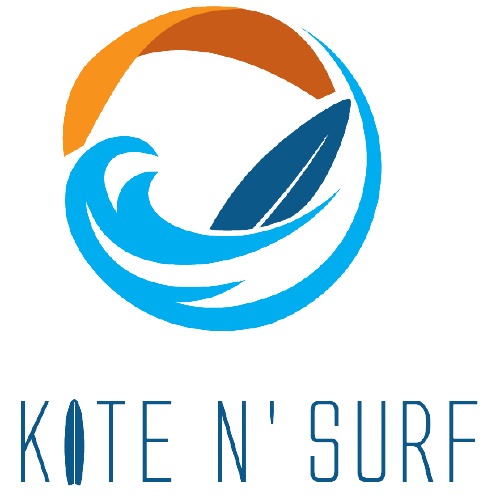The History Of Paddle Boarding: A Guide To Its Origin
Have you thought about the origin and the history of paddle boarding?
You might have heard about this water sport from other people. When you travel to places near the oceans, rivers, and other big bodies of water, everyone is talking about paddle boarding.
You’ve heard that it’s a good form of exercise. Some people say it provides a full-body workout while at the same time, you’ll have the chance to get out in the water and have some fun.
Well, before we start unearthing the history of this very popular water sport, I think it’s reasonable if we first identify the exact definition of paddle boarding.
What is paddle boarding?
According to Oxford Dictionary, “It is a sport or pastime of lying, kneeling, or standing on a paddle board or surfboard and propelling oneself through the water with a paddle or one’s hands.”
Now that we have a clear definition of this exciting and very relaxing water sport, let’s go ahead and take a trip down the memory lane.
Paddle boarding History: The Ancient Period
Paddle boarding traces back its roots to thousands of years ago across different continents. The first record of its existence was as early as 1,000 BC. That’s approximately 3,000 years ago. Fishermen in Peru used a reed watercraft called Caballitos de totora to transport their nets and capture fishes. Up to this day, locals in the port town of Huanchaco still use these vessels. They ride the waves back to the shore, which indicates that it could be the first form of surfing.
Another ancestor of paddle boarding is Hasake. It’s a board-boat hybrid. There’s no exact date when this vessel originated but there are leads pointing to Arabs and Lebanese as the inventors, dating back to 8th century AD. It measures about 60in wide and usually ranges about 15ft in length.
It has a keel which extends from the hull to provide stability and riding comfort. It was originally designed for fishing near the shore during the ancient period. Eventually, it was used as a lifeguard vehicle in the present day.
Dating back to 1400 A.D., Italians used Gondola as a form of transportation within the Venetian Lagoon. It is almost identical with a canoe, except that it is narrower. It is propelled by a single-sweep oar designed for the deep waters of Venice.
For centuries, the gondola was the most common watercraft used as a means of transportation within the city of Venice. Even up to this day, the boat is still a popular attraction and has a role in public transport in the city.
In 1886, boat hull was introduced in the UK. It was specifically built for stand up paddling. There’s no much information about this watercraft aside from the photograph that was captured by a photographer named Peter Henry Emerson.
It was a picture of a man stand up paddling through the marshes somewhere in East Anglia in the UK. The Photo was titled,”Quanting the Marsh Hay.” This might be the first photograph of stand up paddling.
During the 1900’s people used Single-bamboo drifting as a form of transportation in the Northern Guizhou Province of China. Locals used a floating Moso bamboo pole on the water and propel it with a thin bamboo stick.
The high mountains and deep valleys in Guizhou regularly cause flooding in the Wujiang drainage area. This made it difficult to travel out of the province. Locals were wise enough to find a solution by cutting down Moso bamboo trees and use it to drift along the river.
When they reach the bazaar on the lower part of the river, they then sell their bamboo boat. To this day, this tradition still exists. Chinese people later on designated bamboo pole drifting as a national sport.
Modern Times
At the turn of the century, surfboards and outrigger paddles were widely used. It started to evolve all throughout the 1900’s and it became a popular sport primarily on the islands of Oahu and Maui.
Duke Kahanamoku was a well-known surfer during this period especially in the early 1900’s. Together with the other Waikiki Beach Boys like Leroy and Bobby AhChoy, they spearheaded paddle surfing. They would stand up paddle during surfing lessons to have a better view when spotting the waves for their students.
During the mid-1900’s, John “Zap” Zapotocky and Joseph ‘Scooter-Boy’ Kaopuiki were the next generation of paddle surfers after the Waikiki Beach Boys. Zap moved to Oahu in 1940. After watching Duke Kahanamoku and the AhChoy brothers on stand-up boards, he was so amazed that he decided to follow in their footsteps. He has been surfing with paddle since then. John “Zap” Zapotocky became an icon within the surfing community on which they gave him the moniker, “Pearl Diver”.
Meanwhile, Joseph ‘Scooter-Boy’ Kaopuiki was often spotted stand up paddling with his pet dog, Sandy. Pretty cool isn’t it?
Fast forward to late 1900’s. One time, while playing around during their regular surfing sessions in Maui, Dave Kalama and Laird Hamilton used their outrigger canoe paddle while surfing. This might have kickstarted the stand-up paddle boarding into the sport that it is today.
At the same time, on the island of Oahu, Leleo Kinimaka and other talented surfers started to exhibit great surfing maneuvers that are new to the crowd. This further increased the interest of many people and pushed the stand-up paddle surfing into a legitimate sport.
Early 2000’s marked the beginning of a new water sport. Archie Kalepa began participating in cross-channel races within the islands of Hawaii. This made him one of the founding fathers of stand up paddle racing.
California waves
In early 2000, California became a popular destination for paddle surfing. Rick Thomas introduced SUP to the community and many people embraced the sport. He formed a tribe of paddle surfing enthusiasts along La Jolla Shores in San Diego California.
About the same period, athletes like Byron Kurt, Chuck Patterson, and Colin McPhillips joined together to form Hobie SUP Race Team. They would show up at any local prone paddle board racing competitions and will showcase their exceptional skills in paddle boarding.
Ernie Brassard, together with the other paddle surfing proponents organized the world’s first ever inland SUP event. It was held at King’s Beach along the north shore of Lake Tahoe in California. The event still runs even up to this day.
Many people became more interested in the sport including Bob Long who owns West Coast Paddle Sports. He converted his store to become the world’s pioneer SUP-shop. Thereafter, many enterprising individuals followed and established their own surf shops in the area. With this growing trend, California sparked the beginning of a worldwide recognition for the sport of paddle surfing.
Present Day
The sport of paddle boarding is a very popular water sport that is enjoyed by many people who frequently visit the beach or any other bodies of water. It has become a form of relaxation and exercise to many.
Nikki Gregg introduced fitness workouts and Pilates on stand up boards. Other individuals like Sarah Tiefenthaler added a spin by bringing her yoga classes into the water using SUP boards.
What’s more interesting is that SUP has revived its roots – fishing. Lane family were among the first people in San Diego, California to do SUP fishing. When this practice reached Florida, SUP fishing became more popular. The Coopers (Corey and Magdalena) started a SUP company that is mainly dedicated to fishing.
As a great recreational craft as well as great core workout, Paddle Boarding has now made its mark into the surfing world. Starting from the ancient period up to the present, it looks like the sport is here to stay and shows no sign of stopping.
Would you like to experience the sport of Paddle Boarding? Bring on the excitement and get in touch with our team. Kite N Surf will help you learn how to Paddle Board in no time. Our certified instructors have spent years teaching the fine art of paddle boarding. Learn the basics of paddle boarding and start riding the waves! In case you are planning to buy a paddle board we have a team of professionals who will guide you through the buying process in case you are deciding between buying an inflatable paddle board or a rigid paddle board. You can reach out to us through email at [email protected] or call us at +971 55 800 6363.
[button]INQUIRE[/button]

